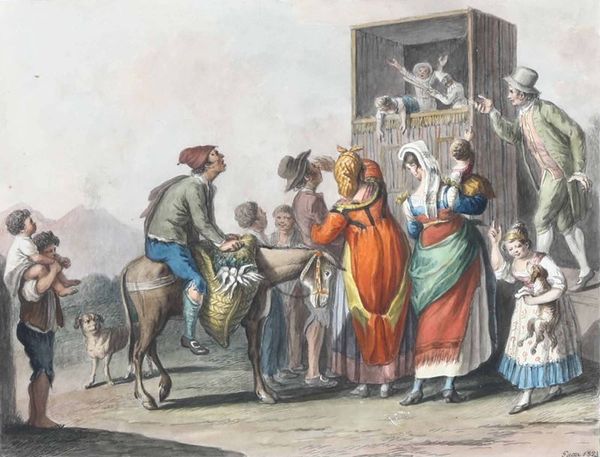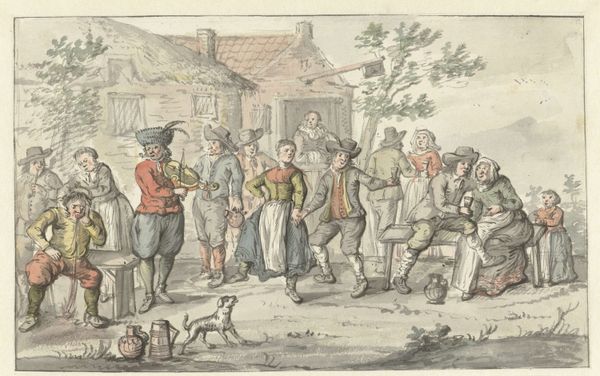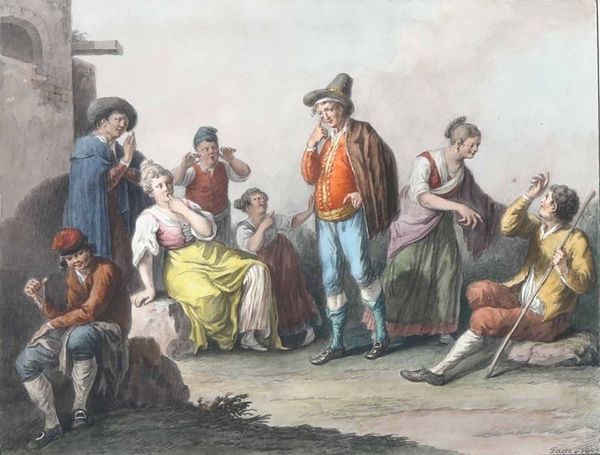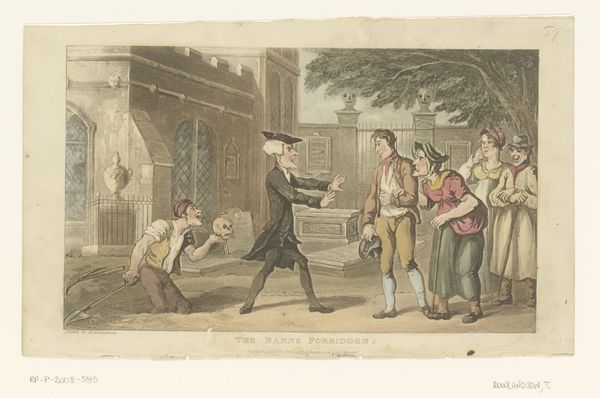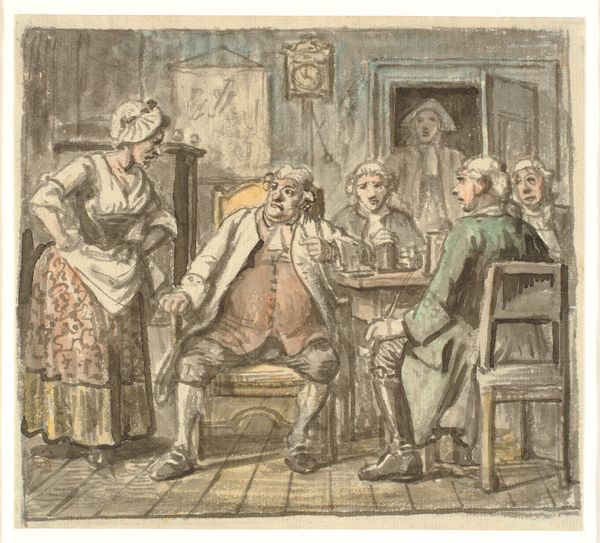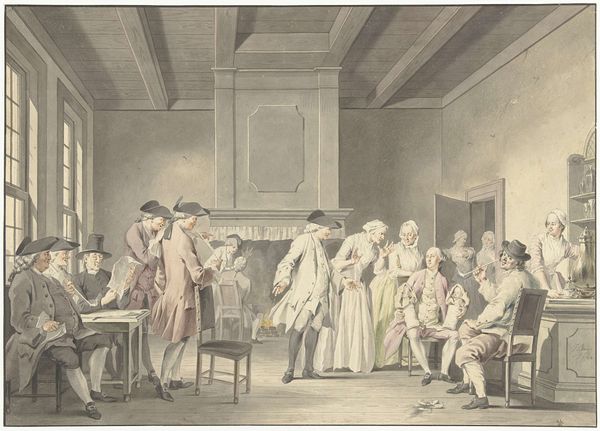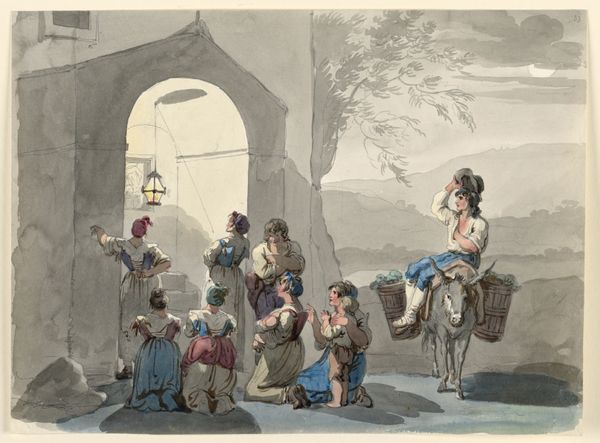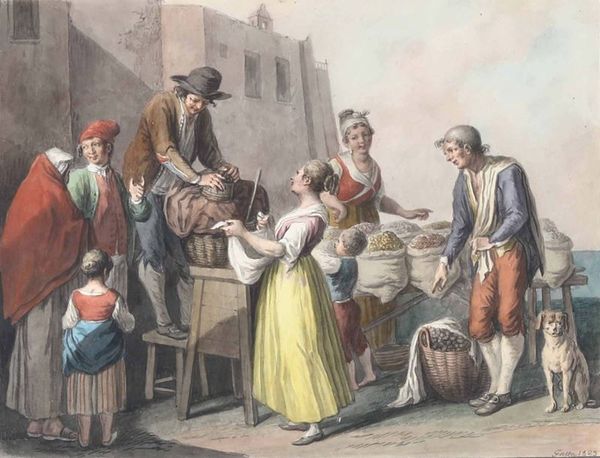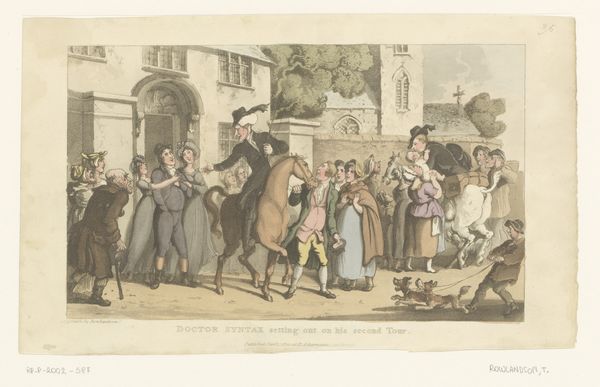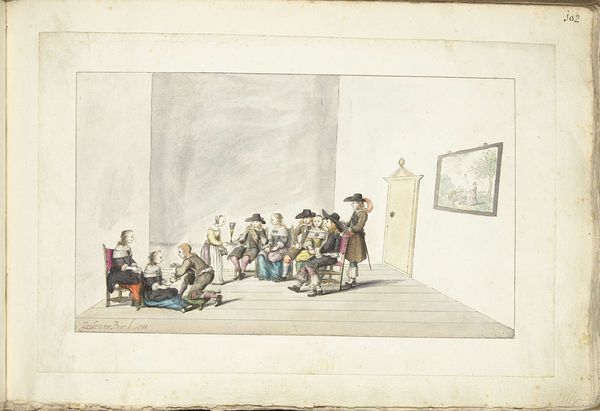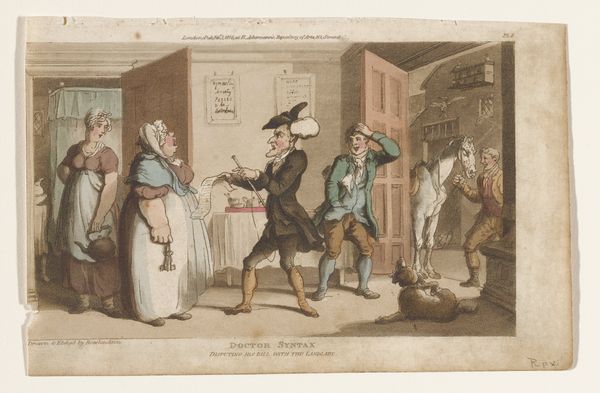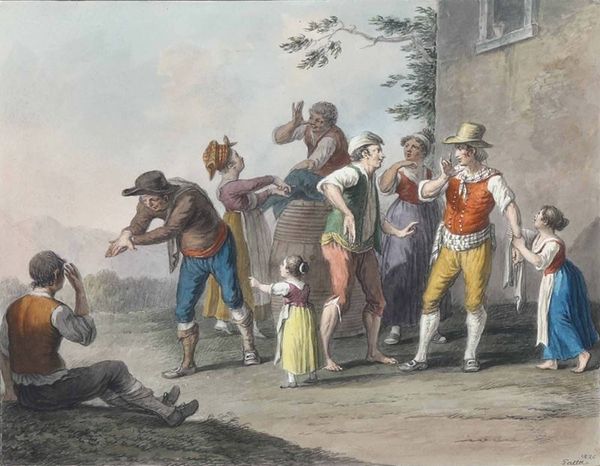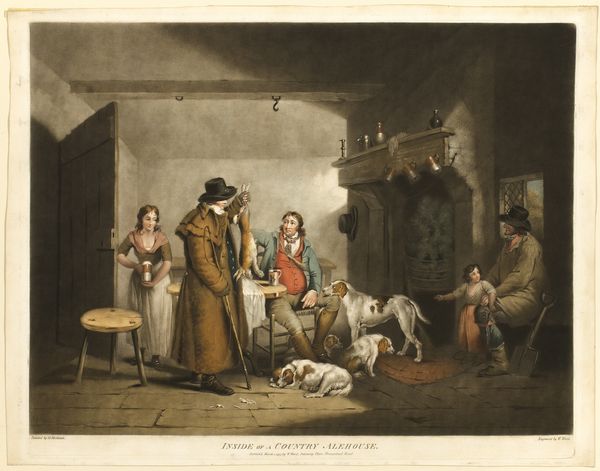
watercolor
#
portrait
#
narrative-art
#
landscape
#
figuration
#
watercolor
#
romanticism
#
watercolour illustration
#
genre-painting
Copyright: Public domain
Curator: The artwork before us, "The ballad singer, after a drawing by Josef Lanzedelly," created by Heinrich Papin in 1819, presents us with a fascinating genre scene, rendered in watercolor. The meticulous lines and delicate washes give the work a crispness that is quite remarkable. Editor: My immediate reaction is one of slightly uneasy amusement. The array of characters performing such banal activities almost feel like players on a stage set, or maybe figurines arranged in a curio cabinet, slightly stiff but colorful. What can you tell me about this staged effect? Curator: Notice how the architecture tightly frames the figures, presenting them to us in a deliberately organized fashion. Papin, working after Lanzedelly, positions them according to a precise scheme; a structural framework, in effect. It is anchored in a landscape and relies on repetition to move the viewer's eye around the picture. The composition shows the ballad singer foregrounded but with other musical accompaniment creating an opportunity for the viewers and laborers around the buildings to pause for a moment in history. Editor: Indeed. Given the period, I wonder about the role of such street musicians in early 19th-century Vienna. Were they truly bringing art to the masses or were they further reinforcing social hierarchies by performing essentially unpaid labor in public spaces? I see echoes of both exploitation and democratizing access here. I wonder, is there any significance to what appear to be members of the working classes inside doing various duties while the musicans preform outside of their homes? Curator: The details—a cat on the roof, the figure working the laundry press—add to this effect of contained harmony. Each element fulfills its pictorial role perfectly in building to this very organized whole and I wonder what is Lanzedelly telling us of the organization of this scene that then passes onto Papin in his work of watercolour illustration? There is a formality to its approach that the style encapsulates, with its flat planes of color and illustrative detail, despite the seeming realism, doesn't attempt to decieve us to thinking it is anything more than paint and water on a substrate. Editor: Perhaps Papin is inviting us to look closely at the different activities as distinct parts of a functioning society. Perhaps it even questions why some do not join in the spectacle. Although at face value a pretty picture of street-life, there appears much here which should lead us to believe the artwork reflects the conditions for specific identities and genders within a time period in European history. Thank you for drawing my eye to that. Curator: An excellent point! It's always rewarding when careful consideration of composition allows a view into cultural implications of a certain time and place. Editor: Indeed. It’s these kinds of nuances that remind us art can be as enlightening as it is beautiful.
Comments
No comments
Be the first to comment and join the conversation on the ultimate creative platform.
